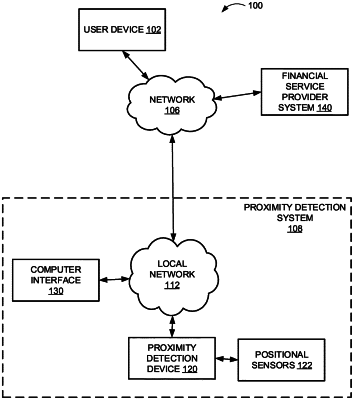| CPC G07F 19/207 (2013.01) [G06F 21/32 (2013.01); G06V 40/172 (2022.01)] | 20 Claims |

|
1. A system comprising:
one or more processors;
one or more positional sensors configured to communicate with the one or more processors;
a memory in communication with the one or more processors and storing instructions that, when executed by the one or more processors, are configured to cause the system to:
receive first level authentication data from a first user during a first user session;
based on the first level authentication data, identify a first user device associated with the first user;
determine whether a current location of the first user device is within a predetermined proximity of a first computing device;
responsive to not determining that the current location of the first user device is within the predetermined proximity of the first computing device:
determine, using the one or more positional sensors, whether the current location of the first user device is within the predetermined proximity of the first computing device;
responsive to determining that the current location of the first user device is within the predetermined proximity of the first computing device or determining, using the one or more positional sensors, that the current location of the first user device is within the predetermined proximity of the first computing device, detect one or more objects within the predetermined proximity of the first computing device using the one or more positional sensors;
determine that at least one of the one or more objects is associated with a human;
responsive to the determination that at least one of the one or more objects is associated with the human, trigger a security measure; and
transmit an indication of the triggered security measure to the first computing device during the first user session.
|